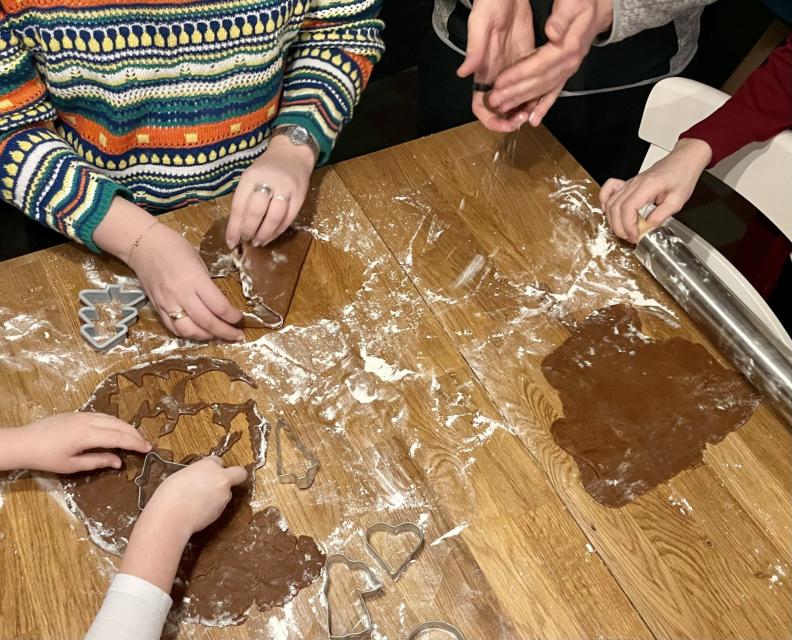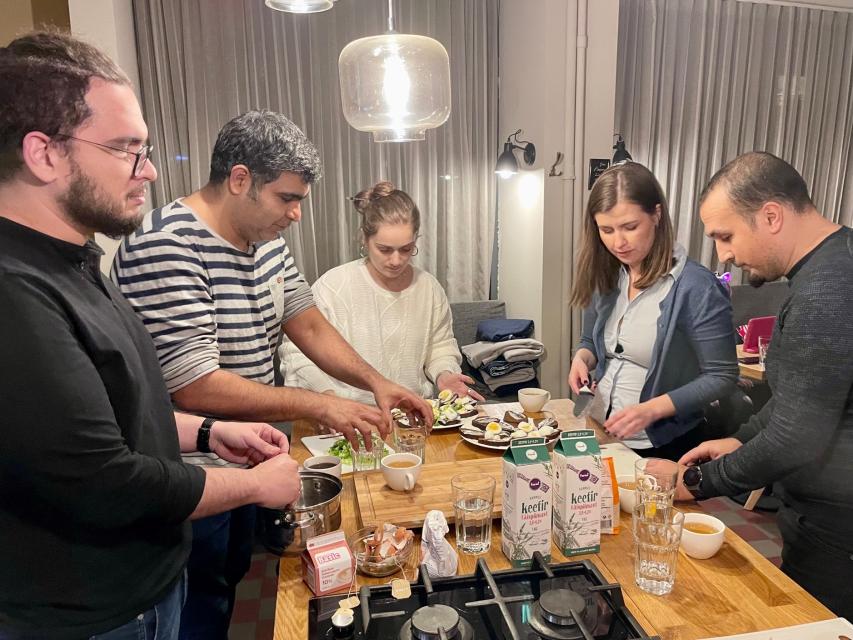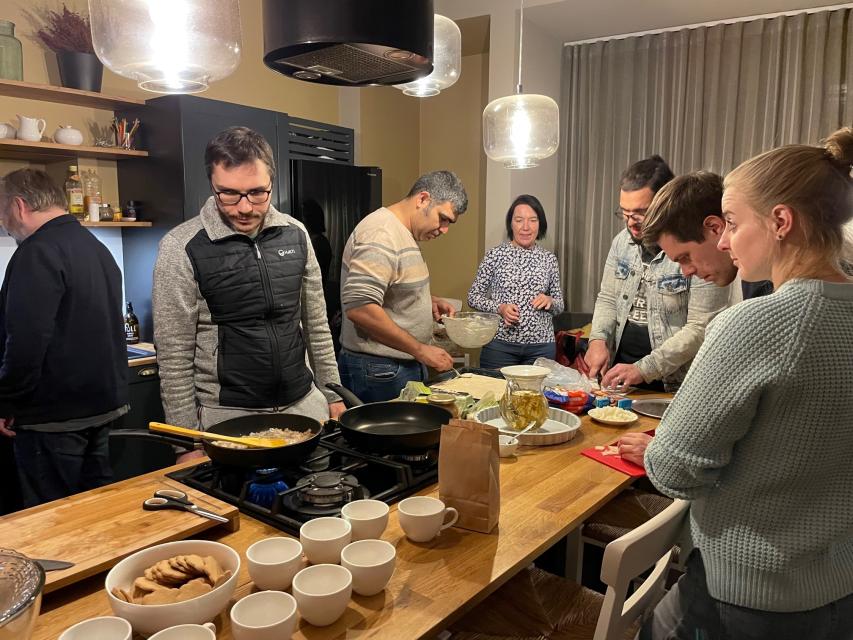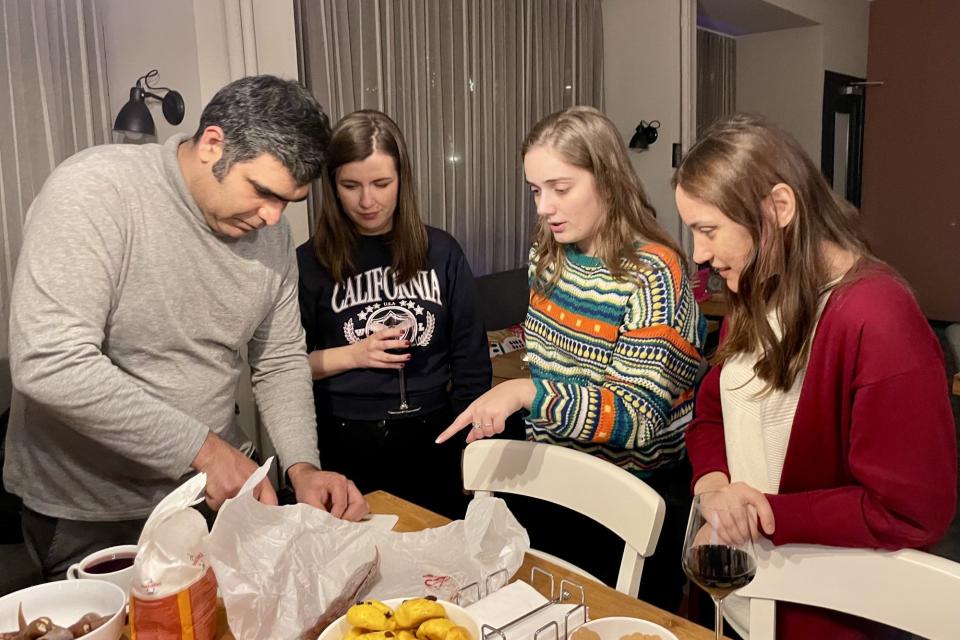Volume 1 – kama and kiluvõileib
Man is what he eats. But what did Estonians traditionally eat? Eesti.life invited our devoted readers to try out some traditional Estonian dishes. On top of cooking together we also hoped to have a lot of fun. And we succeeded! We prepared two typical Estonian dishes – kiluvõileib and kama. While cooking and eating we also shared stories about food, our funny experiences, and memories about living in Estonia.
What was the first word in Estonian what you learned? Surprisingly, for many of us it was kartul. Mehdi was living close to the Central Market that time and was buying potato pies from an old Russian lady who didn’t speak any English. So he had to learn the word kartulipirukas (potato pie). Luis from Colombia just loves to eat potatoes. And for Ketevan, it wasn’t a difficult word at all, because Kartuli means ’Georgian language’ in Georgian.
All of us found quite funny that potato salad exists everywhere, although Estonians think it is something typically Estonian. Many traditional Estonian dishes are actually regional, and Estonians have learned a lot from their Eastern neighbours – like, for example, picking and eating forest mushrooms. The Estonian cuisine has a strong German influence as well.
Kiluvõieib is something you can find in almost every cafe in Estonia. Vürtsikilu is a small fish which is salted and spiced and then left to mature a few days. It tastes great with Estonian dark rye bread and boiled egg. Kama was a traditional summer food, nowadays people eat it for breakfast. Kamajahu (powder) is mixed with kefir, yoghurt or soured milk. You can add berries, jam or honey to it. Head isu!
Volume 2 – karask and pannileib
In November we baked karask (barley soda bread) and Saaremaa The largest island in Estonia(pop. 31,000). potato bread called pannileib. We discussed about different national dishes and invited everyone to bring something from their own country. Mehdi was so kind and prepared a typical Iranian eggplant stew for us. It was so delicious!
That time also Eesti.life chief editor Mart and political journalist Aimar joined us. Mart taught us to bake pannileib which was really delicious.
Here below are descriptions:
Pannileib is a typical traditional dish in Western Saaremaa The largest island in Estonia(pop. 31,000). . It is usually baked on Saturdays (put into the oven before going to sauna) and eaten after sauna. There is more than one recipe because every family baked it their own way and it usually contained leftovers from the week. The main ingredients were grated raw potato (or leftover potato mash), strips of salted or smoked meet and onions. The ingredients were mixed together and baked in a baking dish.
Karask is a traditional Estonian soda bread which has been made for centuries, usually from barley flour. People eat it every day because it was cheap and easy to make – some sour milk or buttermilk, barley flour, and soda for rising. If you were wealthier you could also add butter, eggs, lard or strips of smoked meat. Nowadays, you can use kefir, yoghurt or buttermilk instead of soured milk. Nuts, seeds and dried berries can also be added to karask.
Both dishes are the best while still warm. And don't forget to spread fresh butter (or herb butter) on it.
Volume 3 – verivorst, hapukapsas and piparkook
in December, of course, we prepared some Estonian traditional Christmas dishes. Estonian cuisine has been strongly influenced by German cooking traditions. Typical Christmas dishes are verivorst (blood sausage) and hapukapsas (soured cabbage or sauerkraut). Blood sausages are usually eaten with pohlamoos (lingonberry jam) and kõrvitsasalat (marinated pumpkin cubes). Estonians like to drink hõõgvein or glögi (mulled wine or glögg).
It can cause confusion when you go to the supermarket and spot a wide assortment of blood sausages there. Which ones are the best? It depends on your taste. Some sausages contain more meat, they are also different by shape. Why not buy them all and organise a verivorst tasting event?
Verivorst should be baked in oven at 180 degrees around 20 minutes. Before baking pierce them with a fork so they won't explode. You can also use a frying pan but the result may not be so good. Hapukapsas can be cooked from scratch – raw sauerkraut is widely sold in every shop, but there are also pre-cooked options available in glass or plastic jars.
While enjoying our Christmas food we discussed about other nations’ Christmas (or New Year) food traditions. In many countries meat is not eaten during Christmas – fish is eaten instead. In some countries there must be a certain amount of dishes on the table - for example 12 dishes as Jesus had 12 disciples. In most countries Christmas and New Year are celebrated with multiple gourmet dishes and drinks.
Piparkook is something which is always on the Christmas table, and not only in Estonia. We baked our own piparkooks together and had a lot of fun! On top of this, thanks to Ketevan and Yana, we also had sweets from Sweden and Georgia – lussekatter (St Lucia saffron buns, typical Swedish sweets for St Lucy’s day, 13 December) and Churchkhela – Georgian sweets made from thickened grape must, nuts and flour.
The food was delicious and went well with glögg, christmas tea and Georgian red wine. We had a great time together. Thank you very much, Mehdi, Ketevan, Melisa, Dima, Murat, Yana, Daria, Luis and Mare! Wishing to all our readers a very merry Christmas and a happy New Year! Enjoy the Estonian winter!

Participants are from all over the World - Iran, USA, Turkey, Ukraine, Georgia, Russia and Estonia

Gingerbread baking is great fun!

Kiluvõileib is easy to make and very tasty

For traditional pannileib grated potatoes and smoked meat is used



